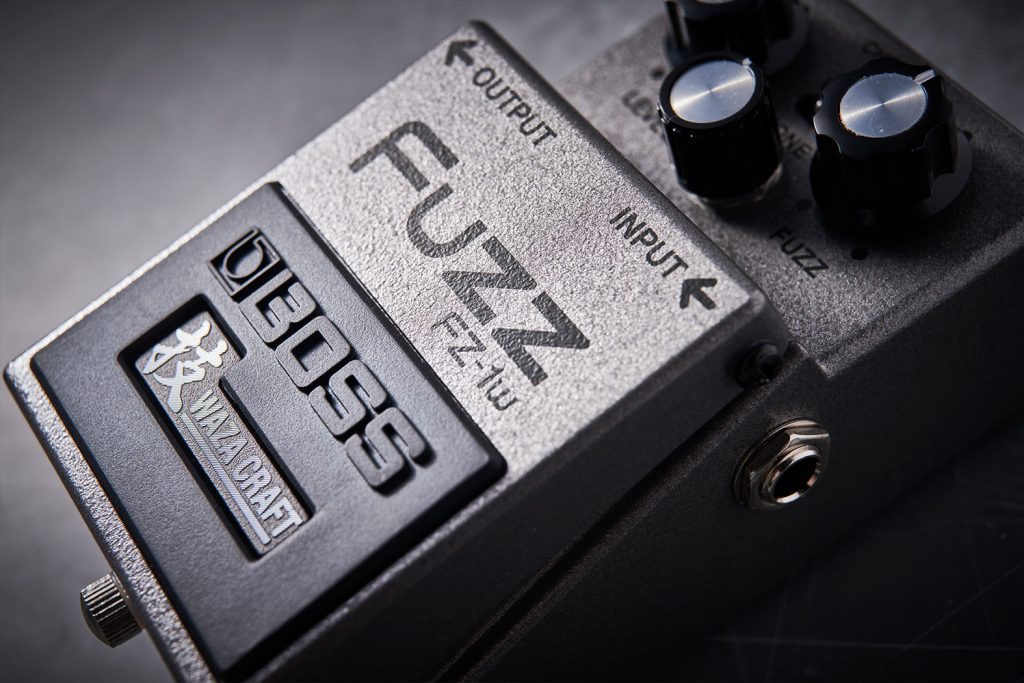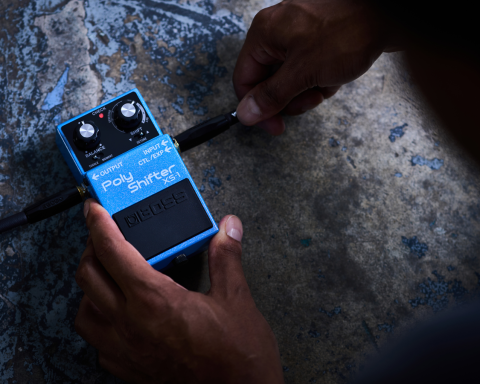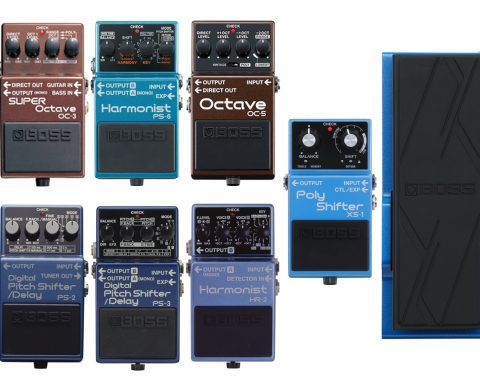For guitarists looking to make the most out of their pedalboard, tremolo can be the solution to unlocking new exciting tones through a handful of simple pedal combinations. At the same time, tremolo can be a classic, subtle, and tasteful effect that can pair well to replicate some of history’s most coveted guitar tones. Explore some effect pairings that work traditionally and with alternative pedal placements to create fantastic results.
Using Tremolo with Other Effects
At first glance, tremolo seems like a particular effect with a narrow range of applications. Fundamentally, all the pedal does is create a rhythmic volume stuttering. Plus, the only user controls are the rate and depth of that pulse. However, it’s precisely tremolo’s simplicity that makes it so versatile.
Tremolo pedals like the BOSS TR-2 work with many other effects and in several positions on the pedalboard. In many cases, tremolo creates different results depending on whether it comes before or after another pedal. Traditionally, tremolo should come after drives, octave pedals, pitch effects, and compressors and before time-based effects, like delay and reverb.
PEDAL COMBINATIONS
Overdrive
Overdrive and tremolo is a simple, classic pairing that can create a thick, dreamy guitar tone. Adding a mid-speed tremolo to a heavily driven chord progression masks the pick attack and creates the illusion of infinite sustain. This method is used beautifully by Billie Joe Armstrong on Green Day’s “Boulevard Of Broken Dreams.”
To achieve something similar, position the tremolo pedal after the overdrive. Next, set the tremolo rate at around 12 o’clock and the depth to about 3 o’clock. The speed of the tremolo pulse should be fast enough to create a steady rhythm but slow enough to mask any pick attack. This combination gives the chord progression an organ-like sustain.
Recommended Pairings
- BOSS TR-2 and DS-1W
- BOSS TR-2 and BD-2W
Tremolo with Fuzz (Reversed)
A less conventional (and surprisingly usable) pairing for tremolo is with a fuzz pedal. However, place the tremolo pedal ahead of the fuzz in this use case. Traditionally, fuzz pedals should be one of the first effects on a pedalboard. Still, this reversal can conjure thrilling tones.
For this combination, set the tremolo rate relatively quickly and the depth at around 12 o’clock. The fuzz pedal will act like a compressor and even out the rhythmic volume change of the tremolo. Instead, the tremolo will create a rhythmic change in the gain of the fuzz, like a swelling in tonal saturation. This combo makes a synth-like throbbing presence for simple basslines and drop-tuned guitar parts.
Recommended Pairing
- BOSS FZ-1W and TR-2
"A fuzz pedal will act like a compressor and even out the rhythmic volume change of the tremolo."

Reverb
The most iconic pairing for tremolo is a reverb pedal. Manufacturers have built these two guitar effects into amplifiers since the early days of rock and roll. Whether for blues, country, soul, or an indie rock ballad, combining the dreamy pulse of a tremolo with a warm reverb echo creates a timeless, luxurious guitar tone.
Listen to the iconic soul hit, “A Change Is Gonna Come” by Otis Redding. This song perfectly exemplifies hypnotic tremolo guitar steeped in classic spring reverb. To create this effect, position the tremolo ahead of the reverb. Then set the rate to the middle and the depth relatively shallow. The reverb pedal should be in a spring emulation mode with a high level and time. This combination is simple, but the results are lush.
Recommended Pairing
- BOSS TR-2 and RV-6
Tremolo with Reverb (Reversed)
The iconic combination of tremolo and reverb works equally well (albeit differently) with the combination reversed. Positioning a tremolo after a reverb is ideal for creating space-age ambient soundscape tones that retain a rhythmic feel.
In this order, the reverb pedal can get pushed further. The combination works nicely with a high reverb effects level and exceptionally well with an ambient, modulated, or shimmer style mode. Reverb time should be at the extreme. The aim is to create a sustained, ambient wall of soupy reverb to chop into sharply cut, rhythmic pulses.
"Combining the dreamy pulse of a tremolo with a warm reverb echo creates a timeless, luxurious guitar tone."
Set the tremolo to a moderate rate, but make sure the depth gets rotated fully clockwise. For the BOSS TR-2, the wave control should get set fully clockwise towards the square wave mode. The result is a full-bodied ambient texture with a rhythmic quality that can be beat-matched to the song. Alternatively, use the sound as a rhythmic backing for other parts.
Recommended Pairings
- BOSS TR-2 and RV-6

Expand and Invigorate
Tremolo occasionally gets overlooked as a classic effect used only for soul and blues. However, it is much more. When combined with other effects, tremolo can create everything from synth-like pulses to ambient warble. It’s versatile, consistently usable, and capable of intriguing tones depending on its position in the effects chain. It’s a pedal no guitarist should be without—a simple tool to expand and invigorate any guitarist’s tone.






